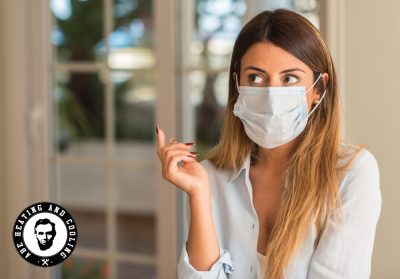“Abe's Heating and cooling were professional and on time. they helped me with two time sensitive projects and did excellent work. I know who I'll be calling if I should ever need an HVAC technician.”
Blog
 Homes today tend to be tightly sealed against the elements, to keep us warm in the winter and cool in the summer. However, without proper fresh air circulation, many dangerous substances can find their way indoors and can build up, creating an indoor air pollution problem. You may be surprised to know that these common pollutants could be in your home causing negative health effects.
Homes today tend to be tightly sealed against the elements, to keep us warm in the winter and cool in the summer. However, without proper fresh air circulation, many dangerous substances can find their way indoors and can build up, creating an indoor air pollution problem. You may be surprised to know that these common pollutants could be in your home causing negative health effects.
Carbon monoxide is an invisible, odorless gas produced by the incomplete combustion of fossil fuels. Faulty gas-powered appliances, such as stoves and furnaces, can create CO and when there is a lack of fresh air circulating, it can quickly build up to dangerous levels. While the gas itself is undetectable, exposure to it can cause fatigue, headaches, dizziness, nausea, confusion and an increased heart rate. In a high enough concentration, CO is deadly.
To protect against CO poisoning, all combustion appliances must be installed correctly and vented to the outside. Gas heating systems should be professionally inspected annually. Working carbon monoxide detectors should be installed throughout the home, particularly near bedrooms.
Radon is a naturally occurring gas produced from the breakdown of uranium in the earth. Like CO, it is odorless and colorless. Exposure to elevated levels of radon increases the risk of lung cancer.
Screening for radon can be done by a professional or with a kit. Kits are relatively inexpensive. If your home has elevated levels of radon, hire a qualified professional to remove it and prevent it from entering your home.
Certain solids and liquids emit gases known as volatile organic compounds, which can have adverse health effects. VOCs exist in a wide range of common household chemicals and products including cleaning products, paint, varnish, cosmetics, hobby products, dry-cleaned clothing, fuels, pesticides, building materials, office equipment, carpeting and furniture. VOCs can be released when the products are in use and also when they are stored. Concentrations of VOCs are two to five times higher indoors than outdoors, according to an EPA report. Negative health effects include eye, nose, throat and skin irritation; headaches, loss of coordination and nausea; and damage to liver, kidneys and central nervous system. Some VOCs can cause cancer in animals and humans.
Exposure to VOCs can be reduced by ensuring proper ventilation, following manufacturer’s use and safety instructions, and properly disposing of unused products and containers.
Second-hand smoke contains 200 known poisons, including formaldehyde and carbon monoxide, making it potentially quite harmful to anyone who breathes it in. Health effects range from eye, nose and throat irritation to wheezing, pneumonia, bronchitis and lung cancer. Exposure to second-hand smoke can trigger asthma attacks and can be especially problematic for anyone with a respiratory condition. Keeping your home smoke-free is an easy way to prevent this form of indoor air pollution. If you or your guests must smoke, do it outside.
Asbestos is typically found in building materials used in older homes. The small fibers it creates can be released into the air and inhaled, increasing the risk of lung cancer and scar tissue on the lungs. Asbestos in the home must be removed by a professional to prevent further contamination.
Common environmental allergens such as dust, pollen and pet dander can easily find their way into your home. There are several steps you can take to mitigate their impact. Have family members and guests remove their shoes when entering to prevent tracking these substances throughout the home. Avoid using scented detergents, candles and air fresheners. Keep pets clean and well-groomed. Change the air filter in your HVAC system regularly and consider installing an air purifier.
Mold grows indoors as a result of excessive moisture. While some forms are harmless, others can be dangerous. Mold can trigger asthma attacks or allergic reactions. Severe reactions can cause fever and difficulty breathing. Other symptoms include nasal congestion, eye or throat irritation, swelling, coughing or wheezing, headaches and skin irritation.
Prevent mold growth by controlling moisture and humidity levels in the home. Fix leaks and clean up spills right away. Properly vent appliances that create moisture. Use a bathroom fan or keep a window open when taking a shower.
To minimize the negative effects of these contaminants, pay attention to the products and materials that you bring into your home. Occasionally open windows to allow fresh air in. Talk to your HVAC professional about other ways to keep your home safe, such as air duct cleaning, installing an air purifier and maintaining your HVAC equipment.